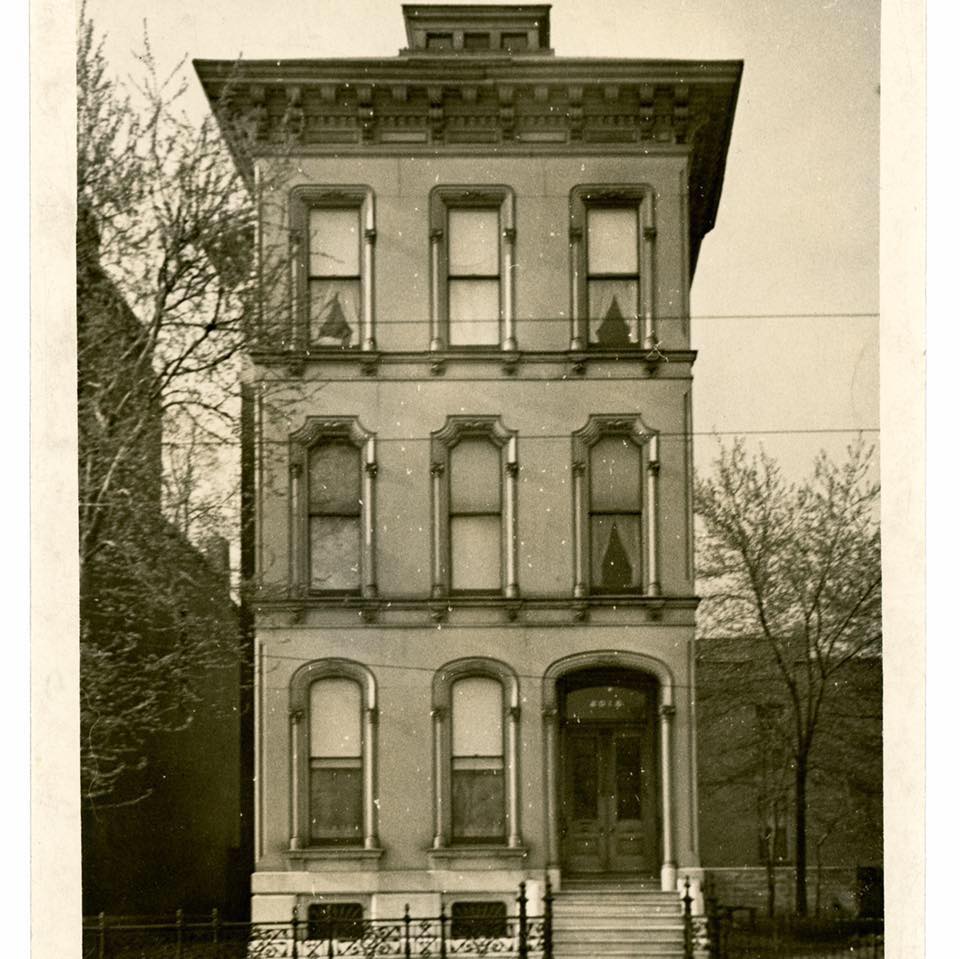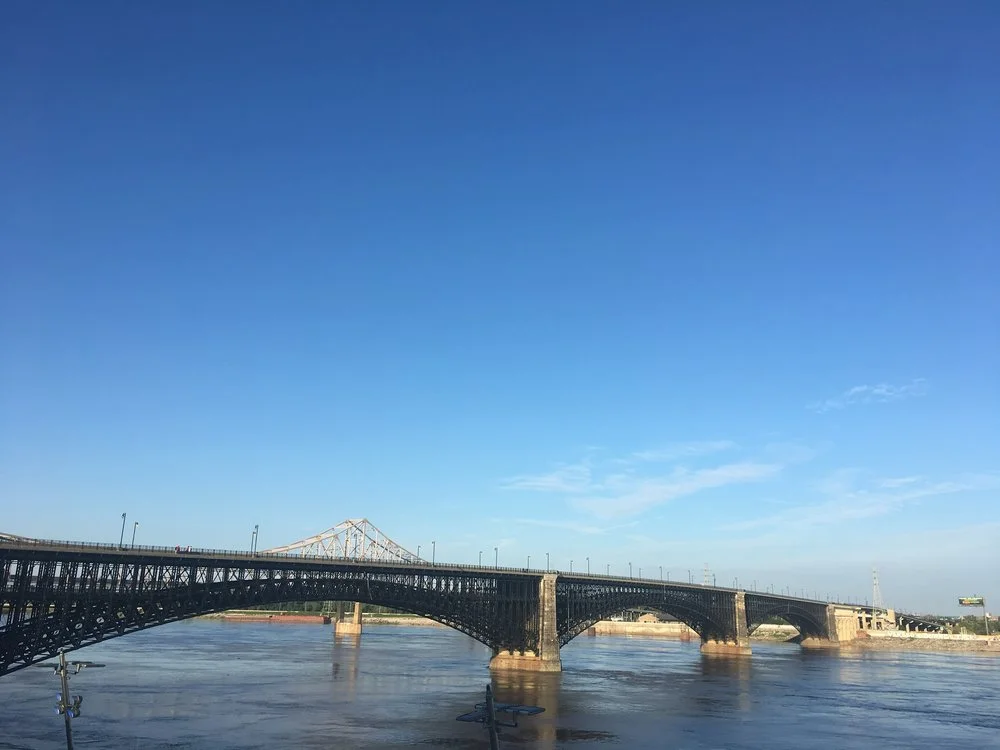Eads Bridge
On July 4th, 1874, the Eads Bridge was completed, becoming the first bridge to cross the Mississippi River in St. Louis. The bridge was dedicated by President Ulysses S. Grant, and the golden spike was driven in by William T. Sherman. Both of these men had lived in St. Louis for a period of time, and had connections in the city. After the bridge was completed, an elephant was led across, as it was commonly thought that an elephant would turn around if it thought the crossing was not structurally sound. After the elephant had crossed, 14 train locomotives were driven across to further prove its strength.
The bridge had been James Buchanan Eads first attempt at building a bridge, although Eads was a self taught engineer, who had been building ironclad riverboats for the Union Navy. After the Civil War, he was asked to lead the bridge project, which was an attempt at making St. Louis maintain its size advantage over Chicago, which it was quickly losing by 1870. The bridge was given extremely difficult parameters to meet to ensure that it didn’t block riverboat traffic, but Eads used massive arched stonework that was buried deep in the riverbed, and the load bearing components of the bridge used steel, becoming one of the first structures to use steel instead of iron for load bearing. It was also one of the first occasions where the bends was discovered, as many of the workers had to dive incredibly deep into the river to do work on the legs of the bridge, and 15 of them ended up dying.
After the completion of the bridge in 1874, the bridge went bankrupt before being purchased by the Terminal Railroad Association, who owned the bridge for over a century. In the 1940s, the bridge was tested for its weight bearing capability to see if it was still as strong as originally intended, but instead of being rated at 3000 pounds per foot, it turned out that it was capable of holding 5000 pounds. The railroad had stopped using the bridge by the 1980s, and it later sold the bridge to the city of St. Louis in exchange for the McArthur Bridge to the south. The bridge saw railroad traffic again in 1993, when the Metro Link opened, and it was opened again to car traffic in 2003. Pedestrians can also cross the bridge, which today is still one of the most iconic structures in St. Louis, behind only the Arch.
Bridge under construction, early 1874
Completed bridge, 1874
Eads Bridge on the 1875 Compton and Dry Map





